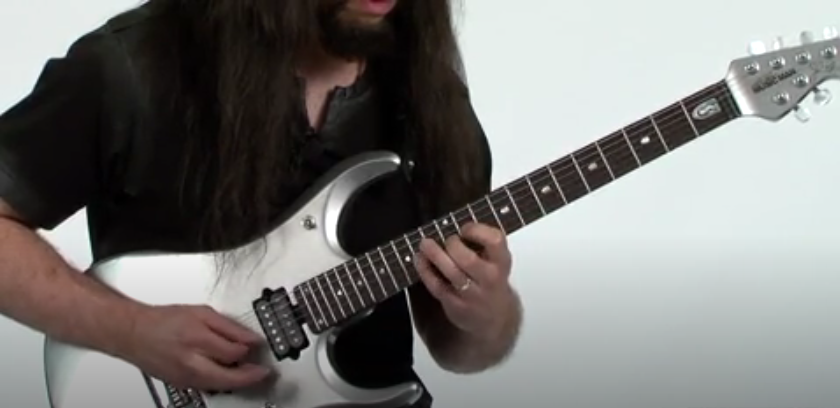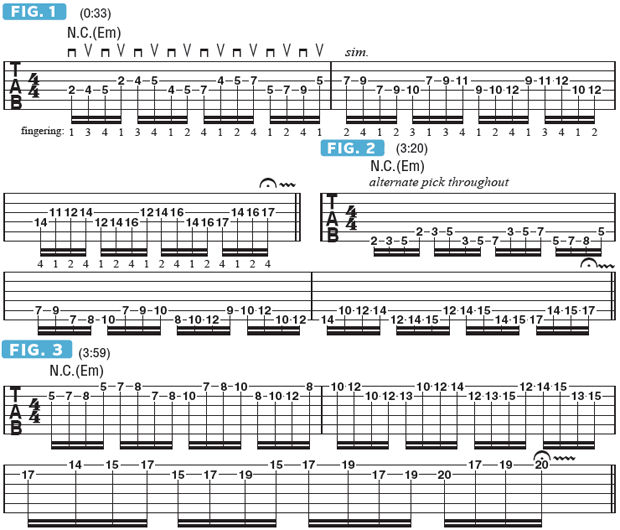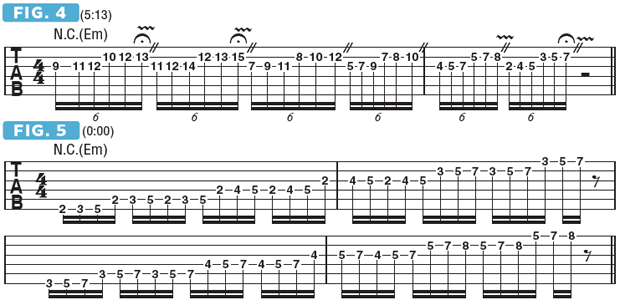Wild Stringdom with John Petrucci: Recognizing Repetitive Fretboard Shapes on All String Groups
Learn some ascending scalar shapes that cover the majority of the fretboard.

Hello, and welcome to my new Guitar World instructional column.
In the coming months, I’ll share with you some of the guitar-playing concepts and approaches that have helped me develop my technique and overall playing style. I’d like to start off with an examination of ascending scalar shapes that, by design, cover the majority of the fretboard.
I have found such patterns to be very useful for both melodic and shred-style playing and also very helpful in regard to the “greater mission,” which is to gain a fuller and deeper understanding of the construction of musical ideas within the framework of the guitar’s fretboard.
The following examples are built from phrases made up of three notes per string that are played across two strings, resulting in various six-note shapes. I play these shapes in a rhythm of straight 16th notes, however, so there is an inherent “threes on twos” kind of rhythm that is alluded to throughout.
All of the phrases in this lesson are based on the E natural minor scale (E F# G A B C D), also known as the E Aeolian mode.
In FIGURE 1, using alternate (down-up-downup) picking throughout, I ascend the D and G strings, beginning on the note E on the D string’s second fret, fretted with the index finger. I follow with two more notes on the D string, fretted with the ring finger and pinkie, and then I move over to the G string and play three ascending notes fretted in exactly the same manner—index to ring to pinkie.
On the upbeat of beat two, I shift up to the next fretboard position of E natural minor and use my index finger, middle finger and pinkie to sound three notes per string on the D and G strings. A third six-note shape then appears when we move up one more time, with the index finger, middle finger and pinkie employed for the wider stretch needed for the subsequent pair of three-note shapes.
Notice that, as you ascend through this riff, there are slight variances in the shapes used on each specific string in order to accommodate the notes of E natural minor. If we move the idea down to the bottom two strings, as shown in FIGURE 2, we find that the same fretting shapes are used, albeit in a different sequence.
And the same is true when we move the idea up to the top two strings, as illustrated in FIGURE 3. Only three different physical shapes are used to form the three-note patterns, and this is good, because it enables one to develop muscle memory in the fret-hand, which is immeasurably beneficial.
The only exception to this consistency of shapes occurs when playing similar patterns on the G and B strings. That’s because these two strings are tuned a major third apart, whereas the adjacent strings in the other pairs are tuned a perfect fourth apart.
As shown in FIGURE 4, one must move up an additional half step—one fret—when crossing from the G string to the B. FIGURE 5 offers a clearer representation of this B-string shift within a longer example that moves across all of the strings. Once you have these shapes under your fingers, experiment with moving them to every area of the fretboard, and then transpose the patterns to all 12 keys.


Get The Pick Newsletter
All the latest guitar news, interviews, lessons, reviews, deals and more, direct to your inbox!









![Joe Bonamassa [left] wears a deep blue suit and polka-dotted shirt and plays his green refin Strat; the late Irish blues legend Rory Gallagher [right] screams and inflicts some punishment on his heavily worn number one Stratocaster.](https://cdn.mos.cms.futurecdn.net/cw28h7UBcTVfTLs7p7eiLe.jpg)
